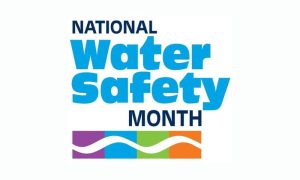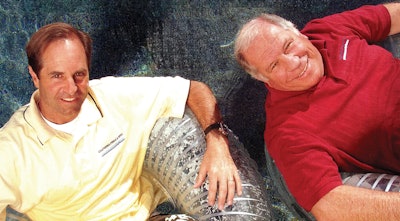Swimming Pools and hot tubs offer distinct aquatic
experiences with one of the
primary differentiators being
the water temperature. As outlined
in Section 3.1 in the ANSI/APSP/
ICC-11 2019 American National
Standard for Water Quality in Public
Pools and Spas, pools are typically
maintained at between 78 to 82 degrees
Fahrenheit. These temperatures allow
for a refreshing escape on warm days,
providing a cool and invigorating
environment for recreational activities.
On the other hand, hot tubs have a
maximum temperature of 104 degrees
Fahrenheit, as they are designed to be
a warm oasis, offering a soothing and
relaxing experience. Recognizing the
significance of temperature differences
in aquatic environments is crucial as it
affects sanitation, water balance, and
overall enjoyment for patrons.
Chemists have long studied kinetics
to understand how it influences
chemical reactions. The Arrhenius
equation, formulated by Swedish
chemist Svante Arrhenius over 100
years ago, provides the mathematical
expression that describes the
temperature dependence of reaction
rates. Applying these principles to the
pool and hot tub water, which exhibit a
temperature difference of approximately
18 degrees Fahrenheit, reveals that
reactions in a hot tub will occur at a rate
approximately twice as fast.
With the understanding that
reactions unfold more rapidly in the
warmer environment of a hot tub, the
role of sanitizers becomes even more
critical in maintaining water quality.
The elevated temperature not only
influences the chemical reactions but
also increases the microbial activity
which includes reproduction, toxin
production and infectivity.
The impact of temperature on
microbes depends on the type of
microbe. Temperature has a significant
impact on the bacteria that cause
Recreational Water Illnesses (RWIs).
But in the hot water of hot tubs, the
growth rate on infective potential
of Pseudomonas aeruginosa and
Legionella pneumophila are increased.
The infective units of Cryptosporidium
(oocysts), Giardia (cysts) and viruses
are not impacted by the temperatures
encountered, as these are dormant
until ingested and germinate in the
gastrointestinal (GI) tract.
Regardless of what sanitizer, chlorine or bromine based, is being used in the
water, the corresponding hypohalous
acid (i.e. hypochlorous acid (HOCl) or
hypobromous acid (HOBr)) is being
generated as it does the sanitizing. The
sanitizers are consumed or depleted,
and disinfection by-products (DBPs)
are formed, more rapidly at higher
temperatures (see Sections 5.2 & 5.3 in
the APSP-11 Standard). This means that
the sanitizer will have more frequent
interactions with organic material (e.g.
sweat, body oils, sunscreen, lotions,
environmental debris and bacteria).
This heightened interaction amplifies
the likelihood of the formation of DBPs,
which, if not managed properly, can
compromise water quality, lead to
unpleasant odors, and pose potential
health concerns for users. Therefore,
diligent monitoring and maintenance of
sanitizer levels, coupled with effective
water circulation and filtration systems,
are paramount to ensuring a safe and
enjoyable environment.
Now that we have briefly discussed
the interactions between a sanitizer’s
effectiveness and organic material in
the pool environment, the topic of how
temperature impacts the solubility of
calcium carbonate scale needs to be
discussed. Calcium carbonate scale
is a white, chalky solid that tends to
accumulate on pool surfaces, plumbing
systems, and heater coils. Unlike other
salts, like your common table salt, i.e.,
sodium chloride, as temperature increases,
the solubility of calcium carbonate
decreases. This is demonstrated by using
the saturation index and changing the
temperature factor of a balanced water
to higher temperatures; the water will
become more scale forming (see PHTA
Water Balance Indexes Fact Sheet, 2017).
Compounding the challenges faced by
pool and spa owners, scale can provide
a surface for organic contaminants to
adhere to, allowing for an environment
suitable for the growth of bacteria
and other microorganisms. Regular
monitoring, along with adjustments to
maintain optimal water quality parameters,
is essential for preventing scale formation
and ensuring the longevity and efficiency
of equipment.
POOL AND SPA WATER
TESTING — TEMPERATURE
EFFECTS
Chemical reactions of reagents for testing
pool water are affected by temperature
just like the reaction in the water. But is
it significant to affect the result of the
test? Most water test reagents react very
quickly. If a chlorine DPD reaction in
pool water is complete in one second
at about 80 degrees Fahrenheit, then
in a spa at 104 degrees Fahrenheit, the
reaction should take about half a second.
Compared with the time it takes to
perform the test, this is an insignificant
difference because the reaction is
complete at both water temperatures.
This is true of most of the reactions in
most pool and spa water testing. Another
thing to note is that the sample water
temperature can change while setting up
and running the test. A spa water sample when transferred to small testing vials or
comparators may cool down significantly.
This means the testing temperature
of spa water is often close to ambient
temperatures. Most manufacturers
recommend testing between 50 degrees
Fahrenheit and 90 degrees Fahrenheit —
however, the best advice is to follow the
instructions from the manufacturers.
One reaction which does not occur
quickly is the reaction with combined
chlorine. Combined chlorine includes
monochloramine, dichloramine,
trichloramine and a variety of organic
amines, which are all disinfection
by-products. These DBPs may take 30
seconds or more to react with the test
reagent. Manufacturers may recommend
waiting 30 seconds before taking a total
chlorine reading.
Cyanuric acid testing does have
a known temperature affect. High
temperatures, above 90 degrees
Fahrenheit, can result in readings as much
as 15 ppm low. The ideal temperature
is about 75 degrees Fahrenheit. Again,
moderating the water temperature before
testing is suggested.
Portable electrochemical sensors and
probes can be subject to temperature
interferences. Many pH and salt testers
have built in temperature compensation.
Read the instruction manual to see if
your probe is temperature compensated.
If they are not, moderate the water
temperature before testing. ORP probes
typically do not have a significant
temperature interference. Again, check
the user’s manual.
CONCLUSION
Every pool and hot tub owner,
maintenance technician, and operator
is advised to gain an understanding
of the water chemistry at work in any
recreational body of water — and water
temperature is a critical detail to examine.
Water quality degrades faster in hotter
water, placing even more dependence
on the need to maintain sanitizer levels.
Water testing results can vary based on
temperature, and pool scale behaves
differently in a steaming hot tub than it
does in a refreshing pool. Understanding
the temperature dependence of chemical
reaction rates can support the ongoing
maintenance of a clean and safe hot
tub. Strict adherence to manufacturer
testing instructions is crucial, as well
as knowledge of industry-accepted
standards such as the APSP-11 2019
American National Standard for Water
Quality in Public Pools and Spas.
Tip: An automated chemical controller
can maintain a residual of sanitizer as
needed (as referenced in this article
regarding level of sanitizer).
Additional information: For more
information, see the PHTA Fact Sheets
on Water Balance Indexes and Common
Interferences in Pool and Spa Water
Testing, which are available on the PHTA website.





